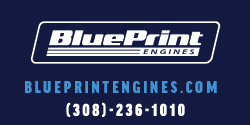barsteel
Member
Hello!
I had my '65 Fury III out this summer, and while pulling into my driveway, the front wheel rubbed against the inside of the fender. The car rode well otherwise, and it hasn't rubbed since, but today I decided to take a look to see if anything was amiss. The car has a nicely built 440 with a 4spd, although it originally came with a 383.
The factory manual states that I should measure "from lowest area of the height adjusting blades directly below the center of the lower control arm inner pivot" and "from the lowest point of the steering knuckle arm". The specs in the back of the book give one number for ride height, so I can only assume that the spec is for the difference between the two numbers.
I used the front inner control arm pivot and measured from the surface of the adjuster in between the sides of the control arm and from the bottom of the steering knuckle next to the grease fitting. I got "about" 12" and 9 3/4" respectively, the best numbers I could get lying on my back and using a tape measure, which would give me a ride height of 2 1/4", about 3/4" higher than the upper spec of the ride height in the manual, 1 3/8 +/- 1/8. Factor in some error because I was bending the tape measure to hit the floor, and I'd say that I'm roughly in spec, maybe a little over.
The car came with 15" rims and 275 60R15s on the front that have a height of 28". The manual calls for either 7.75-14 or 8.25-14 with a "B" engine (don't know what that is). Those tires have a height of 26.3" and 26.7" respectively, so my tires are about 1.5 inches taller than those called for in the manual.
Has anyone had a similar rubbing issue running larger than stock tires? This is my first C body, so I'm not sure if a 1.5" tire difference will lead to rubbing.
As it sits, the torsion bar adjusting bolts are about 3/4 of the way "in", with maybe an inch of thread showing on the outside of the adjuster. Could my torsion bars be fatigued/worn? There's no visible damage/cracks, etc., and this is my first car with torsion bars, so I don't know if torsion bars "wear" or lose their spring. They are original to the car as far as I know.
Thanks in advance for any answers. Chris
T
I had my '65 Fury III out this summer, and while pulling into my driveway, the front wheel rubbed against the inside of the fender. The car rode well otherwise, and it hasn't rubbed since, but today I decided to take a look to see if anything was amiss. The car has a nicely built 440 with a 4spd, although it originally came with a 383.
The factory manual states that I should measure "from lowest area of the height adjusting blades directly below the center of the lower control arm inner pivot" and "from the lowest point of the steering knuckle arm". The specs in the back of the book give one number for ride height, so I can only assume that the spec is for the difference between the two numbers.
I used the front inner control arm pivot and measured from the surface of the adjuster in between the sides of the control arm and from the bottom of the steering knuckle next to the grease fitting. I got "about" 12" and 9 3/4" respectively, the best numbers I could get lying on my back and using a tape measure, which would give me a ride height of 2 1/4", about 3/4" higher than the upper spec of the ride height in the manual, 1 3/8 +/- 1/8. Factor in some error because I was bending the tape measure to hit the floor, and I'd say that I'm roughly in spec, maybe a little over.
The car came with 15" rims and 275 60R15s on the front that have a height of 28". The manual calls for either 7.75-14 or 8.25-14 with a "B" engine (don't know what that is). Those tires have a height of 26.3" and 26.7" respectively, so my tires are about 1.5 inches taller than those called for in the manual.
Has anyone had a similar rubbing issue running larger than stock tires? This is my first C body, so I'm not sure if a 1.5" tire difference will lead to rubbing.
As it sits, the torsion bar adjusting bolts are about 3/4 of the way "in", with maybe an inch of thread showing on the outside of the adjuster. Could my torsion bars be fatigued/worn? There's no visible damage/cracks, etc., and this is my first car with torsion bars, so I don't know if torsion bars "wear" or lose their spring. They are original to the car as far as I know.
Thanks in advance for any answers. Chris
T

















